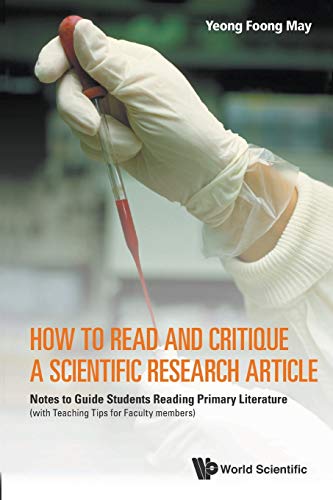How To Read And Critique A Scientific Research Article: Notes To Guide Students Reading Primary Literature (With Teaching Tips For Faculty Members) - Softcover

Zu dieser ISBN ist aktuell kein Angebot verfügbar.
Alle Exemplare der Ausgabe mit dieser ISBN anzeigen:Die Inhaltsangabe kann sich auf eine andere Ausgabe dieses Titels beziehen.
„Über diesen Titel“ kann sich auf eine andere Ausgabe dieses Titels beziehen.
- VerlagWspc
- Erscheinungsdatum2014
- ISBN 10 9814579165
- ISBN 13 9789814579162
- EinbandTapa blanda
- Anzahl der Seiten116
- Bewertung
Neu kaufen
Mehr zu diesem Angebot erfahren
Versand:
EUR 5,22
Von Vereinigtes Königreich nach USA
Beste Suchergebnisse beim ZVAB
How to Read and Critique a Scientific Research Article
Buchbeschreibung paperback. Zustand: New. Language: ENG. Artikel-Nr. 9789814579162
Weitere Informationen zu diesem Verkäufer | Verkäufer kontaktieren
HOW TO READ AND CRITIQUE A SCIENTIFIC RESEARCH ARTICLE
Buchbeschreibung Zustand: New. InhaltsverzeichnisIntroduction How to Search for an Article Anatomy of a Typical Scientific Article A Brief Insight into How Scientific Articles Get Published in Journals The Introduction Section: Background Information on the Topic . Artikel-Nr. 517029291
Weitere Informationen zu diesem Verkäufer | Verkäufer kontaktieren

